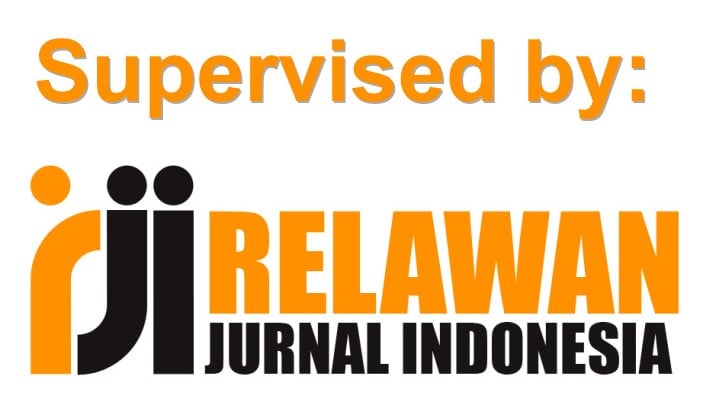Motivasi Mahasiswi Bercadar dan Responnya terhadap Stereotip Negatif Pengguna Cadar
DOI:
https://doi.org/10.18592/jsi.v8i2.3984Keywords:
Motivation, negative stereotype, response, veil, Cadar, motivasi, respon, stereotip negatif.Abstract
This study aims to determine the motivation for Muslim women to veil and their responses to negative stereotypes directed at veil users. This research is qualitative research with a case study approach. Semi-structured interviews were given to fourteen participants as a data collection technique. The data analysis in this study used three stages; data reduction, data presentation, and drawing conclusions. The results showed that mostly the veiled motivation is intrinsic motivation which is a form of religious expression from the participants and also as an effort to guard against the opposite sex. While their response to negative stereotypes is indifference and positive thinking.References
Afifah, N. (2019). Cadar dan ruang kontestasi penafsiran otoritatif. Religia, 22(1), 17–32.
Ahmad, H. Z. R. (2014). Ekspresi keagamaan, dan narasi identitas: Studi program pesantren tahfidz intensif Daarul Quran Cipondoh Tangerang. Jurnal Multikultural Dan Multireligius, 13(2), 51–69.
Amanda, R., & Mardianto. (2014). Hubungan antara prasangka masyarakat terhadap muslimah bercadar dengan jarak sosial. Jurnal RAP UNP, 5(1), 72–81. Retrieved from http://ejournal.unp.ac.id/index.php/psikologi/article/view/6642
Andjarwati, T. (2015). Motivasi dari sudut pandang teori hirarki kebutuhan Maslow, teori dua faktor Herzberg, teori X Y Mc Gregor, dan teori Motivasi prestasi Mc Clelland. JMM17: Jurnal Ilmu Ekonomi & Manajemen, 1(1), 45–54.
Aziz, A. (2018). ِPerempuan bercadar: Antara budaya dan syari’ah. Jurnal Darussalam; Jurnal Pendidikan, Komunikasi Dan Pemikiran Hukum Islam, X(1), 196–211.
Eaton, N. R. (2015). Hijab, religiosity, and psychological wellbeing of muslim women in the United States. Journal of Muslim Mental Health, 9(2), 25–40.
Husain, W., & Aziz, N. (2014). The levels of body esteem among veiled and unveiled women. FWU Journal Os Social Sciences, 8(1), 46–49.
Husna, F. (2018). Niqab squad Jogja dan muslimah era kontemporer di Indonesia. Jurnal Al-Bayan, 24(1), 1–28. https://doi.org/10.1017/CBO9781107415324.004
Ilyas, K. (2019). Indadari ungkap curahan hati anggota Niqab Squad kenakan cadar di berbagai profesi. Indonesia: TV One.
Juliani, R. (2018). Stigmatisasi mahasiswa tentang maraknya mahasiswa bercadar di kampus. Jurnal Community, 4(1), 90–104.
Kudhori, M. (2019). Kontroversi hukum cadar dalam perspektif dialektika syariat dan adat. Ijtihad : Jurnal Wacana Hukum Islam Dan Kemanusiaan, 18(1), 33–56. https://doi.org/10.18326/ijtihad.v18i1.33-56
Leach, A., Ammar, N., England, D. N., Remigio, L. M., Kleinberg, B., & Verschuere, B. J. (2016). Less is more? detecting lies in veiled witnesses. Law and Human Behavior, 40(4), 401–410.
Mahanani, P. A. R. (2017). Perempuan Salafi Memaknai Jilbab: Antara Alternatif dan Oposisional. Jurnal Sosial Politik, 2(1), 123. https://doi.org/10.22219/sospol.v2i1.4760
Mufid, M. (2012). Etika dan Filsafat Komunikasi (3rd ed.). Jakarta: Kencana.
Nasser, M. (1999). The new veiling phenomenon-is it an anorexic equivalent? A polemic. Journal of Community & Applied Social Psychology, 412, 407–412.
Neill, B. O., Gidengil, E., Côté, C., & Young, L. (2015). Freedom of religion, women’s agency and banning the face veil: the role of feminist beliefs in shaping women’s opinion. Ethic and Racial Studies, 38(11), 1886–1901. https://doi.org/10.1080/01419870.2014.887744
Notoatmodjo, S. (2009). Pengembangan Sumber Daya Manusia. Jakarta: PT Rineka Cipta.
Qolbi, K., & Haidar, M. A. (2013). Makna penggunaan cadar mahasiswi Institut Keislaman Abdullah Faqih (INKAFA). Jurnal Paradigma, 1(3), 1–4.
Rahman, A. F., & Syafiq, M. (2017). Motivasi, stigma dan coping stigma pada perempuan bercadar. Jurnal Psikologi Teori Dan Terapan, 7(2), 103–115.
Rasyid, L. A., & Bukido, R. (2018). Problematika hukum cadar dalam Islam: sebuah tinjauan normatif-historis. Jurnal Ilmiah Al-Syir’ah, 16(1), 74–92. https://doi.org/10.1051/matecconf/201712107005
Ratri, L. (2011). Cadar, media, dan identitas perempuan muslim. Forum, 39(2), 29–37.
Sahfitri, H. D. A. (2017). Komunikasi intrapersonal pengguna cadar (Studi deskriptif kualitatif komunikasi intrapersonal pengguna cadar pada mahasiswi STAI As-Sunnah Tanjung Morawa). Jurnal Ilmu Komunikasi Flow, 3(10), 1–10. Retrieved from https://jurnal.usu.ac.id/index.php/flow/article/view/19241/8105
Sari, F. H., Lilik, S., & Agustin, R. W. (2014). Studi fenomenologi mengenai penyesuaian diri pada wanita bercadar. Wacana Jurnal Psikologi, 6(11), 103–122.
Sircar, S. I. (2015). The veil and Muslim women: Prophetic tradition or Stage-managed Islam ? IOSR Journal of Humanities and Social Science (IOSR-JHSS), 20(10), 76–79. https://doi.org/10.9790/0837-201017679
Sudirman, M. (2018). Cadar bagi wanita muslimah dalam perspektif hukum Islam. Ash-Shahabah: Jurnal Pendidikan Dan Studi Islam, 4(1), 55–63.
Sugiyono. (2014). Metode Penelitian Kombinasi (Mixed Methods) (5th ed.). Bandung: Alfabeta.
Tim Penyusun Kamus Pusat Bahasa. (2008). Kamus Bahasa Indonesia. https://doi.org/10.1192/bjp.111.479.1009-a
Downloads
Published
How to Cite
Issue
Section
License
Authors who publish with this journal agree to the following terms:
- Authors retain copyright and grant the journal right of first publication with the work simultaneously licensed under a Creative Commons Attribution License that allows others to share the work with an acknowledgment of the work's authorship and initial publication in this journal.
- Authors can enter into separate, additional contractual arrangements for the non-exclusive distribution of the journal's published version of the work (e.g., post it to an institutional repository or edit it in a book), with an acknowledgment of its initial publication in this journal.
- Authors are permitted and encouraged to post their work online (e.g., in institutional repositories or on their website) before and during the submission process, as it can lead to productive exchanges, as well as earlier and greater citation of published work (See The Effect of Open Access).





















